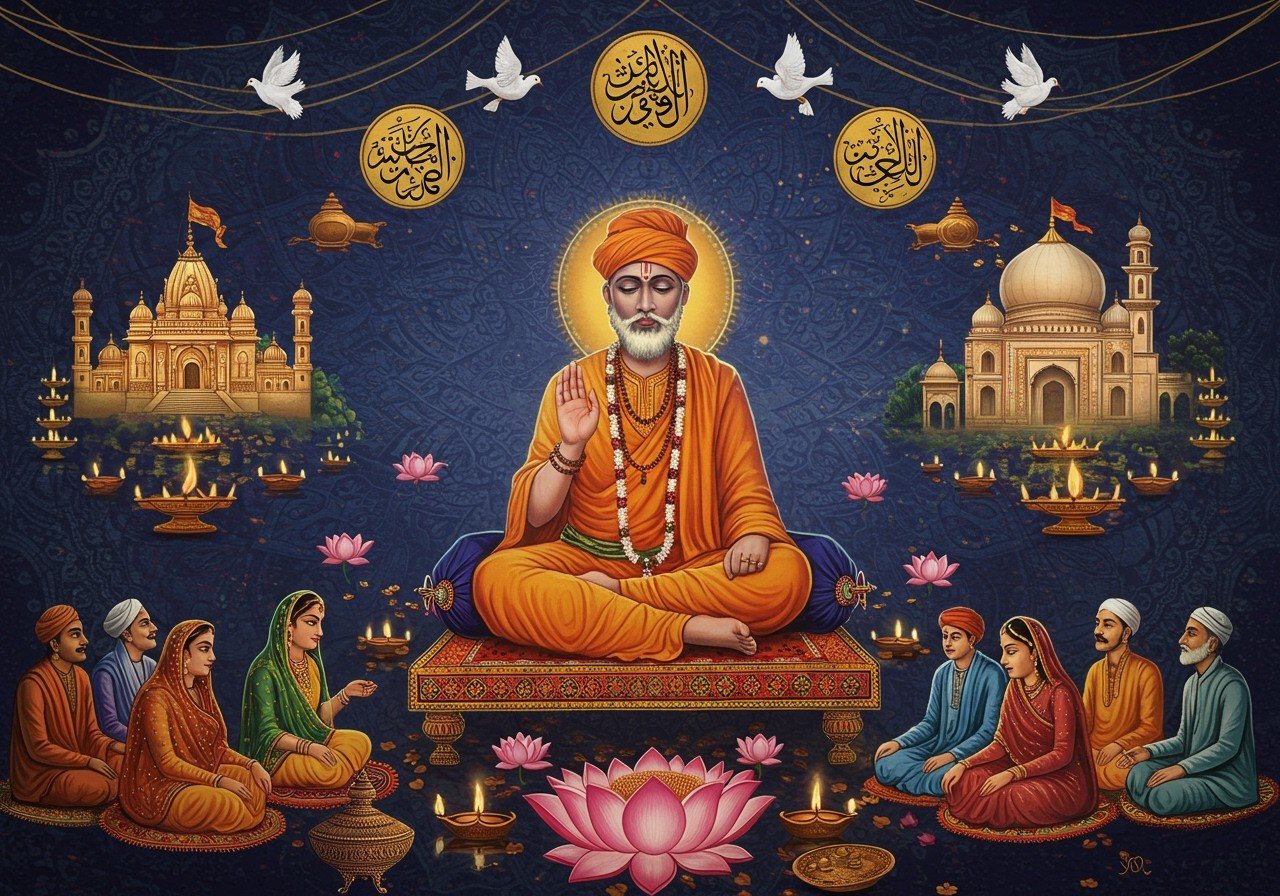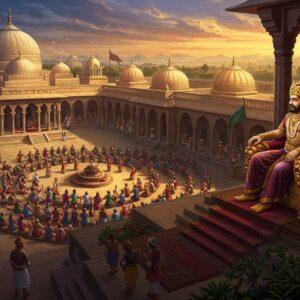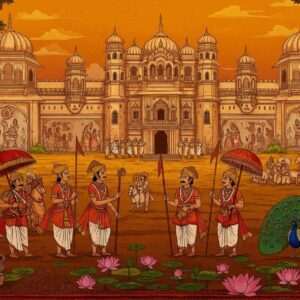
The Kabir Panth, meaning “Path of Kabir,” is a vibrant spiritual tradition deeply rooted in India’s rich cultural heritage. Inspired by the 15th-century mystic poet and saint Kabir (1398-1448), this community emphasizes a direct, personal connection with the divine, transcending the boundaries of organized religion. Kabir’s teachings, critical of what he perceived as empty rituals and ethical inconsistencies within both Hinduism and Islam, offer a path of love, equality, and inner contemplation.
The History and Evolution of Kabir Panth
While Kabir himself didn’t establish a formal sect, his profound teachings resonated deeply, leading his disciples to establish centers (maths) after his passing to continue sharing his wisdom. Two key disciples, Surat Gopal and Dharamdas, founded the prominent subdivisions of the Kabir Panth, contributing to its diverse structure. Initially centered around Kabir’s home in Varanasi, known as Kabircaura, the tradition expanded across India and among the Indian diaspora over the 17th and 18th centuries. Kabir’s influence extended to the Bhakti movement within Hinduism, and his verses are honored within Sikhism’s sacred scripture, the Guru Granth Sahib.
- Origins (15th Century): Kabir’s disciples, including Surat Gopal (founder of Kabir Chaura Math in Varanasi) and Dharamdas (founder of Dham Khera Math in Chhattisgarh), established centers to propagate his teachings after his death.
- Development (17th-18th Centuries): The Kabir Panth flourished across various regions of India, adapting to local contexts while maintaining core principles. It also spread among the Indian diaspora worldwide.
- Influence: Kabir’s philosophy impacted the Bhakti movement within Hinduism and his poetry is included in the Guru Granth Sahib of Sikhism.
Core Beliefs and Principles of the Kabir Panth
At the heart of the Kabir Panth lies a belief in the oneness of God, a divine presence that transcends religious divisions and resides within each individual. Kabir Panthis prioritize a simple, ethical life grounded in love, compassion, and the pursuit of truth. Rejecting idol worship and religious dogma, they emphasize self-purification, inner contemplation, and a direct, personal experience of the divine through practices like meditation and self-reflection. The Kabir Panth champions equality among all people, rejecting the caste system and promoting universal peace, non-violence, and mutual respect.
- Oneness of God: Kabir Panthis believe in a single, formless God that transcends religious labels, residing within every being.
- Rejection of Dogma and Rituals: Kabir criticized empty rituals, emphasizing a direct connection with the divine through meditation and self-reflection.
- Equality and Social Justice: The Kabir Panth advocates for equality among all, rejecting social hierarchies and promoting harmony.
- Truth and Righteousness: Truth is paramount, aligning with a life of righteousness and detachment from worldly possessions.
- Atma Gyan (Self-Realization): A central belief is achieving Atma Gyan, the awareness of one’s true self as part of the universal reality.
Practices and Rituals of Kabir Panthis
Kabir Panthis integrate their beliefs into daily life through practices that emphasize simplicity, sanctity, and truthfulness. Devotional gatherings, known as Satsangs, involve singing Kabir’s bhajans (devotional songs) and sakhis (couplets) accompanied by musical instruments. The Guru plays a vital role, leading prayers and mantras to guide devotees. Initiation into the Kabir Panth involves receiving the Kanthi Mala, a rosary symbolizing commitment to the path. The Chauka ritual, a central practice, involves creating a sacred space for contemplation and prayer. Kabir Panthis follow a strict vegetarian diet and abstain from alcohol, tobacco, and narcotics, embracing a life of minimal material possessions.
- Satsang (Spiritual Gatherings): Devotees gather to sing Kabir’s bhajans and sakhis, fostering community and spiritual connection.
- Kanthi Mala (Rosary): A symbol of initiation, representing commitment to Kabir’s teachings and a life of simplicity.
- Chauka Ritual: This ritual involves creating and maintaining a sacred space for prayer and meditation, representing purity and devotion.
- Vegetarianism and Abstinence: Kabir Panthis adhere to a strict vegetarian diet and avoid intoxicants as part of their ethical living.
Poojn.in: Supporting Your Spiritual Journey
Poojn.in, India’s leading online store for cultural and religious goods, offers a curated selection of items to support your Kabir Panth practice. Discover pure cotton prayer shawls, meditation mats, simple prayer beads, cotton wicks for diyas, and natural incense sticks – all crafted with quality and purity in mind. Our convenient online ordering and pan-India delivery ensure you have access to the resources you need for a meaningful spiritual experience. Explore our collection at www.poojn.in and let our customer support team assist you in finding the perfect items for your spiritual journey. This pure cotton yarn is perfect for Kabir Panthis.
The Enduring Relevance of Kabir Panth in the Modern World
Kabir’s teachings of love, equality, and inner transformation continue to resonate deeply in contemporary society. His emphasis on unity transcends religious boundaries, offering a path towards interfaith dialogue and understanding. In a world grappling with social divisions, Kabir’s message of equality and justice holds immense relevance. The Kabir Panth, with its focus on simple living and spiritual fulfillment, provides a framework for navigating the complexities of modern life.
By embracing Kabir’s wisdom and integrating its timeless values into our daily lives, we can contribute to a more harmonious and compassionate world. The Kabir Panth stands as a testament to the enduring power of spiritual truth and its potential to inspire positive change.
Further explore the rich tapestry of Indian spirituality and culture with these insightful articles: Hindu Culture Beyond Temples: Practices and Beliefs and Exploring Hinduism: Core Beliefs and Practices. Learn about the spiritual significance and history of the Siddhivinayak Temple.


